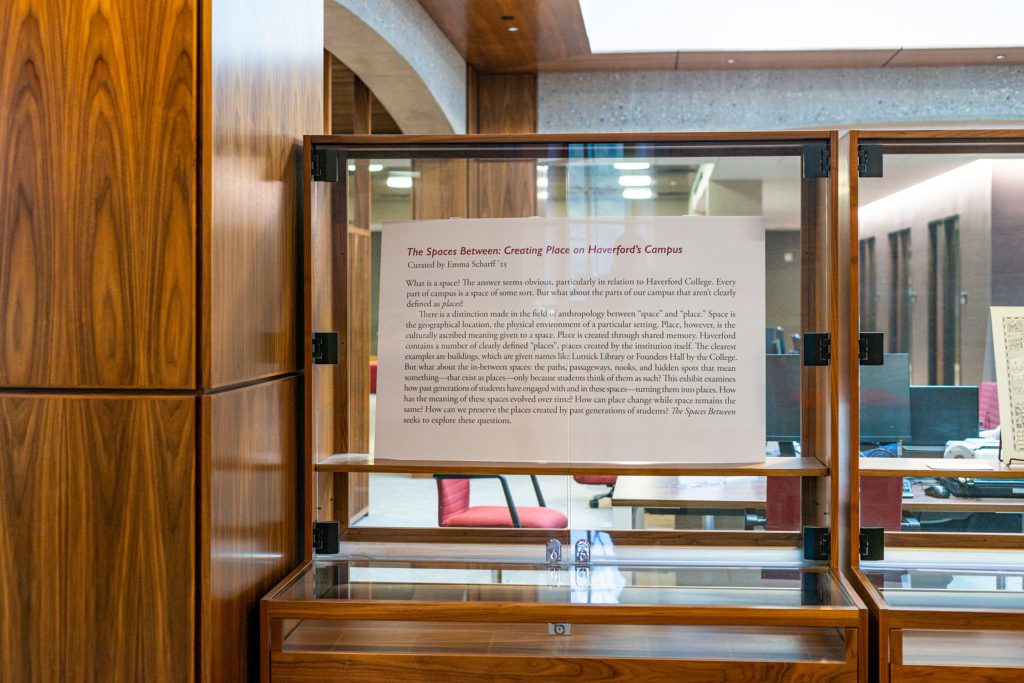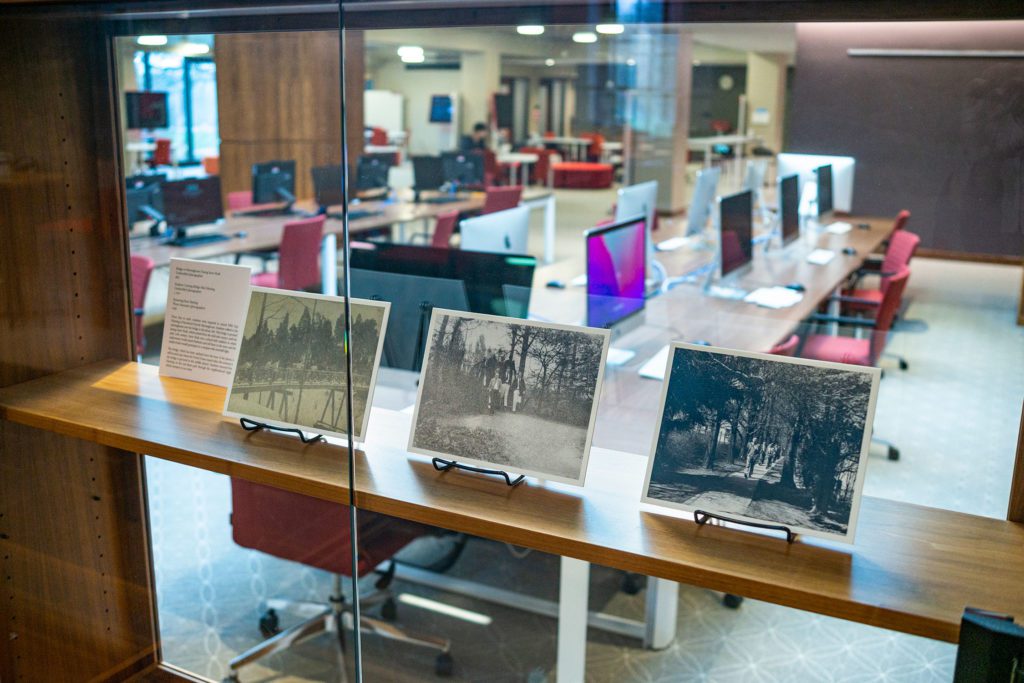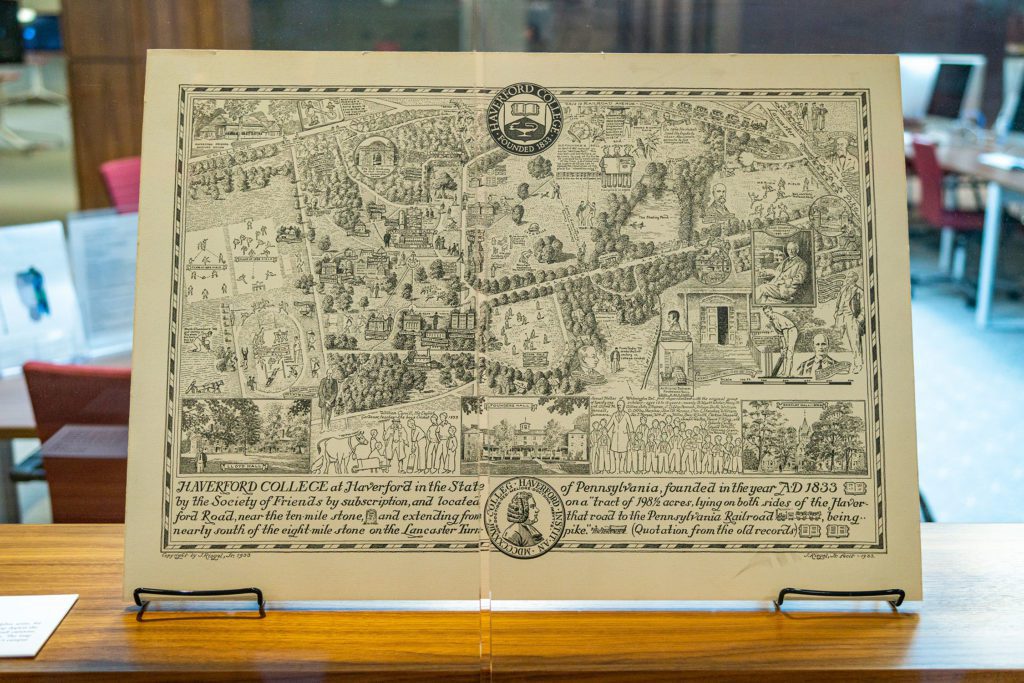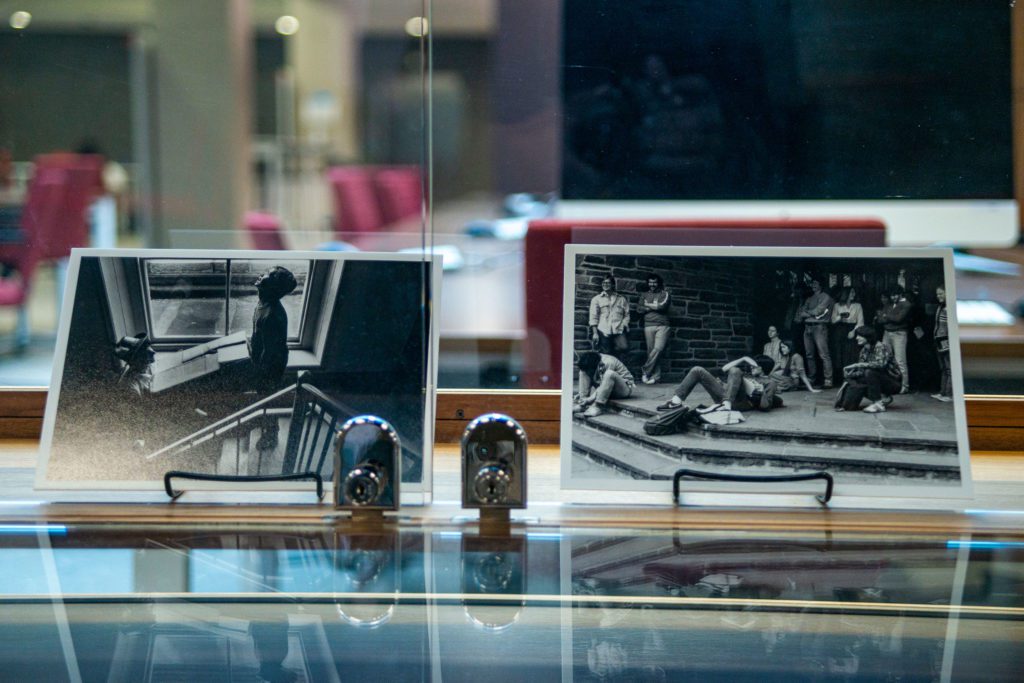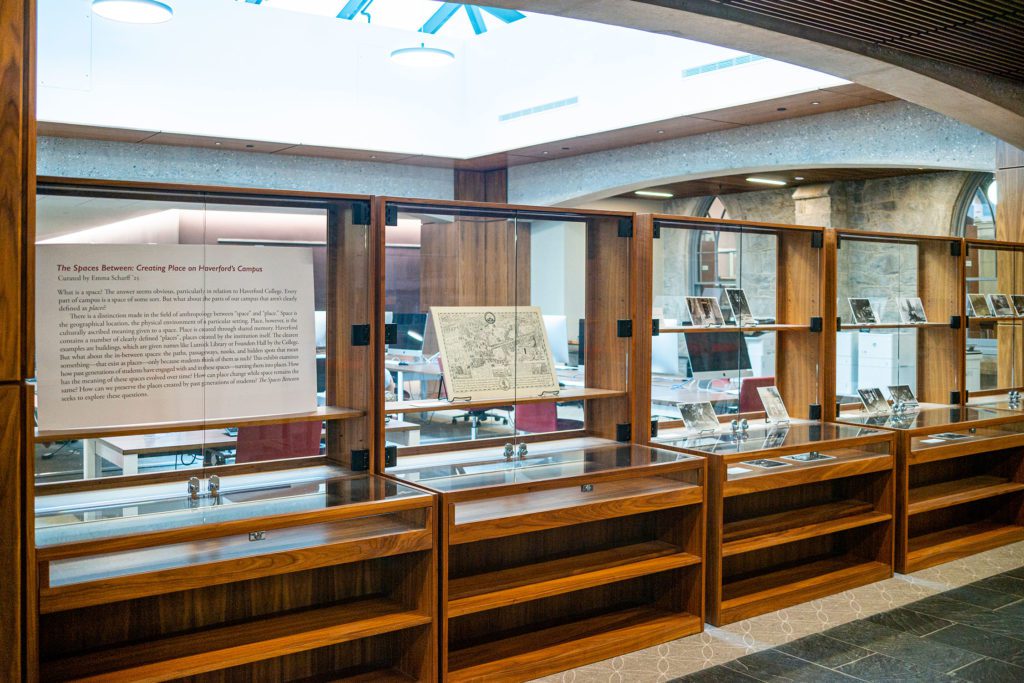Haverford’s campus has served as a place to study, grow, and mature for thousands of students throughout its history. However, the physical campus has dramatically changed over the school’s history. Realizing this, Emma Scharff ‘25 took up the challenge of documenting the campus’ rich history of change and evolution. As a result, her exhibit, The Spaces Between: Creating Place on Haverford’s Campus, was born.
The Spaces Between, located on the second floor of Lutnick Library, has been on display throughout the school year and continues until March 3. The exhibit consists of a series of photographs depicting the everyday lives of students on Haverford’s campus from as far back as 1892. The Spaces Between includes photographs of students disembarking from the blue bus in 1983, a student guitarist playing in Lunt Circle in the 1980s, and students crossing the bridge near Yarnall during a snowstorm to get to a Quaker Meeting in 1892. The exhibit even includes a 1933 cartoon map of the Haverford College campus, which ends with Cope Field—demonstrating how far the campus has come physically.
“The photos, along with the exhibit texts, aim to explore the idea that students have the power to ‘create a place’ on campus through the ways in which they occupy space,” said Scharff, who was single-handedly responsible for the exhibit’s construction and design. As last summer’s Documenting Student Life intern, she had access to materials archived in Quaker and Special Collections. Scharff sorted through thousands of photographs and documents to select ones which she felt best represented the evolution of Haverford’s campus life.
“I was especially interested in the photos of students on campus–it was really compelling to think of the generations and generations of students who lived, studied, and were changed by their time on this campus the same way I have been,” she said. “Seeing the photos of students occupying the very same spaces on campus that we do today felt like being able to go through a time machine.”
In addition to selecting and choosing every picture, Scharff also did the necessary research to write captions and descriptions for each one. “Writing the exhibit texts was also a challenge–that type of writing is unique, and relatively new to me, so there was a lot of editing and rewriting involved,” she said. She even installed the exhibit herself, receiving curation advice and technical assistance as needed from Liz Jones-Minsinger and Bruce Bumbarger, the College’s archivist and Library conservator, respectively.
Scharff’s work on The Spaces Between was the main project she worked on as the summer’s Documenting Student Life intern. She also conducted alumni interviews as part of the Alumni Oral History Project, created metadata to assist in archiving for Quaker and Special Collections, and conducted other research projects. Her article, The Many Faces of Founders Hall, is a sample of the important historical work she has assisted Haverford with.
Scharff hopes that the exhibit has provided viewers with valuable insight on Haverford’s history. By helping viewers understand how campus spaces have been historically inhabited by students, the exhibit reminds viewers to take a look at their own roles in creating the places they occupy at Haverford.
The Spaces Between: Creating Place on Haverford’s Campus is on display on the second floor of Lutnick Library until March 3, 2023.

